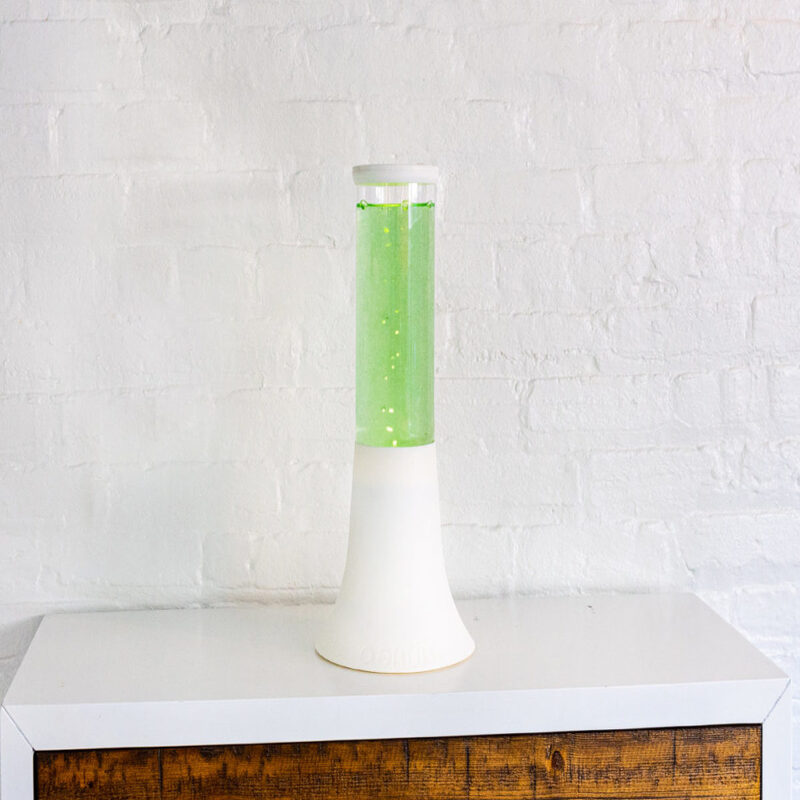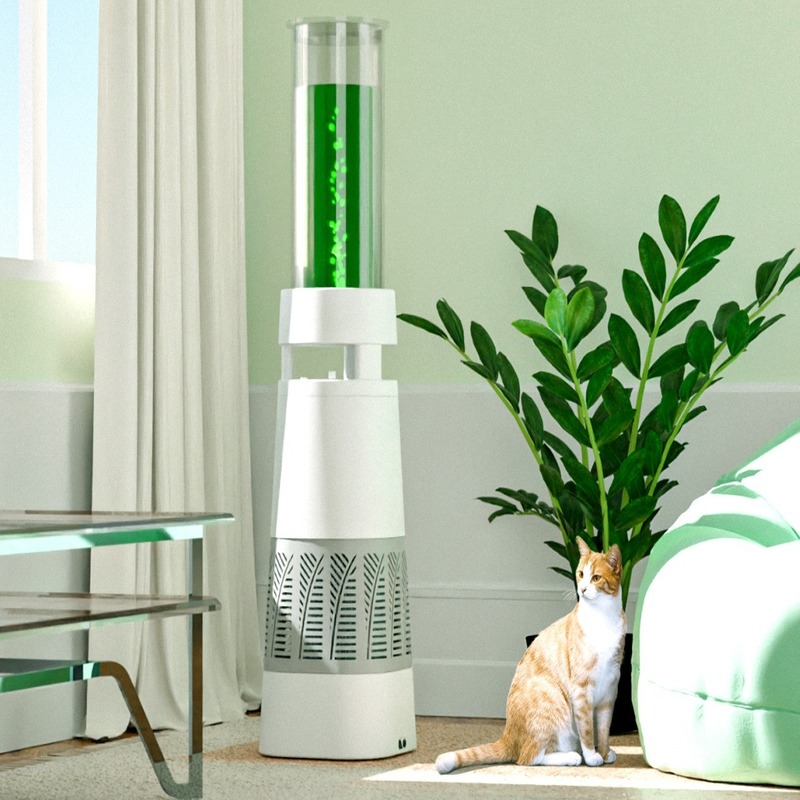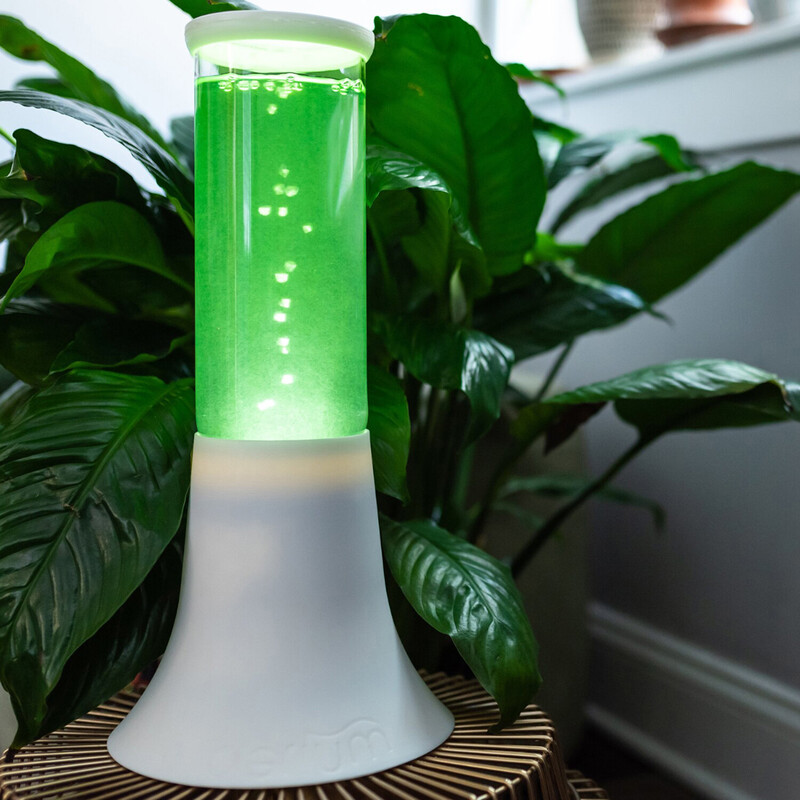Introduction
In an era marked by increasing environmental concerns, the pursuit of sustainable solutions for everyday challenges has become paramount. One such challenge is ensuring clean and healthy air quality, both indoors and outdoors. While traditional air purifiers often rely on energy-intensive filters and chemical processes, a promising alternative is emerging: algae air purifiers. These innovative systems harness the natural power of algae to scrub pollutants from the air, offering a sustainable and efficient approach to air purification. This article delves into the fascinating world of algae air purifier, exploring their mechanisms, benefits, and potential to revolutionize the way we breathe.

Understanding the Science Behind Algae Air Purification
Photosynthesis: The Engine of Air Purification
At the heart of algae air purification lies the remarkable process of photosynthesis. Like terrestrial plants, algae possess the incredible ability to convert light energy into chemical energy, utilizing carbon dioxide (CO2) and water (H2O) in the process. However, unlike plants that release oxygen (O2) as a byproduct, algae primarily utilize the generated oxygen for respiration, releasing it back into the surrounding water. This continuous cycle of CO2 absorption and O2 release forms the foundation of algae’s air purification capabilities.
Biofiltration: Removing Pollutants with Precision
Beyond CO2, algae demonstrate a remarkable capacity to absorb a wide range of airborne pollutants. This process, known as biofiltration, involves the uptake of pollutants through the algae’s cell walls. Once inside, these pollutants undergo various biochemical reactions, effectively neutralizing their harmful effects. The efficiency of biofiltration varies depending on the specific algae species and the types of pollutants present. Nonetheless, algae have proven effective in removing a diverse array of contaminants, including volatile organic compounds (VOCs), particulate matter (PM), nitrogen oxides (NOx), and even heavy metals.
The Multifaceted Advantages of Algae Air Purifiers
Sustainability at its Finest
Algae air purifiers stand out as a beacon of sustainability in the realm of air purification technologies. Unlike conventional air purifiers that rely on disposable filters and consume significant energy, algae-based systems operate on a renewable resource: sunlight. Algae cultivation requires minimal resources, typically consisting of water, nutrients, and light. This inherent sustainability makes algae air purifiers an environmentally friendly choice, minimizing their ecological footprint and contributing to a greener future.
Enhanced Air Quality for Healthier Living
The benefits of algae air purifiers extend beyond environmental sustainability to encompass significant health advantages. By effectively removing a wide array of pollutants, these systems contribute to a healthier indoor environment. Reduced exposure to allergens, pollutants, and airborne irritants can alleviate respiratory problems, reduce allergy symptoms, and improve overall well-being. This makes algae air purifiers particularly beneficial for individuals with respiratory sensitivities, asthma, or allergies.
Versatility and Adaptability for Diverse Applications
Algae air purifiers exhibit remarkable versatility, adapting seamlessly to various settings and applications. From residential homes and offices to hospitals and industrial facilities. These systems can be tailored to meet specific air purification needs. Moreover, algae cultivation can be integrated into existing infrastructure, such as building facades or rooftop gardens, further enhancing their practicality and aesthetic appeal.

Exploring the Different Types of Algae Air Purifiers
Photobioreactors: Controlled Environments for Optimal Growth
Photobioreactors represent a sophisticated approach to algae cultivation for air purification. These enclosed systems provide a controlled environment where algae growth can be optimized through precise adjustments of light intensity, temperature, nutrient levels, and CO2 concentration. Photobioreactors come in various designs, including tubular, flat-panel, and column reactors. Each offering advantages depending on the specific application and scale of operation.
Algal Turf Scrubbers: Harnessing the Power of Flow
Algal turf scrubbers (ATS) utilize a simpler yet effective approach to algae cultivation. These systems involve growing algae on submerged surfaces, often in shallow tanks or raceways. Water containing nutrients and pollutants flows over the algae, facilitating both nutrient uptake and pollutant removal. ATS systems are particularly well-suited for outdoor applications, such as wastewater treatment and bioremediation, where they can leverage natural sunlight for algae growth.
Living Walls and Biofilters: Integrating Nature into Urban Landscapes
Integrating algae air purification into architectural designs has gained increasing traction in recent years. Living walls, also known as biowalls or vertical gardens, incorporate algae into building facades, providing both aesthetic enhancement and air purification benefits. Similarly, biofilters utilize algae-rich media to filter air, often incorporated into ventilation systems or standalone air purification units. These integrated approaches seamlessly blend nature into urban environments, promoting sustainability and enhancing well-being.
Addressing Challenges and Future Prospects
Scaling Up Production for Wider Adoption
Despite their numerous advantages, widespread adoption of algae air purifiers faces challenges, primarily related to scaling up production and reducing costs. As with any emerging technology, optimizing algae cultivation methods, enhancing system efficiency, and achieving economies of scale are crucial for making these systems more accessible to a broader market.
Continued Research and Development
The field of algae air purification is constantly evolving, driven by ongoing research and development efforts. Scientists are exploring novel algae species with enhanced pollutant removal capabilities, developing innovative reactor designs for improved efficiency, and investigating the potential of algae for producing valuable byproducts, such as biofuels or bioplastics.
Policy Support and Public Awareness
Government policies and incentives play a vital role in fostering the adoption of sustainable technologies. Providing tax breaks, subsidies, or other forms of support for algae air purifier research, development, and deployment can accelerate their market penetration. Additionally, raising public awareness about the benefits of algae-based air purification is essential for driving consumer demand and promoting wider acceptance.

The Mechanics of Algae Air Purifiers: A Glimpse into the Future of Clean Air
The basic design of an algae air purifier is elegantly simple yet highly effective. It typically consists of a transparent bioreactor, filled with a carefully selected species of algae, and equipped with a system to circulate air through the reactor. The following steps illustrate the purification process:
Step 1: Drawing in Polluted Air
A fan within the air purifier draws in polluted air from the surrounding environment, directing it into the bioreactor, where the algae are housed.
Step 2: Algae’s Natural Filtration Process
As the air passes through the bioreactor, the algae absorb the carbon dioxide and other pollutants present in the air, effectively using them as nutrients to fuel their growth and photosynthesis.
Step 3: Releasing Clean, Oxygen-Rich Air
The algae, having consumed the pollutants, release clean, oxygen-rich air back into the environment, creating a continuous cycle of air purification.
The Many Advantages of Algae Air Purifiers: Sustainability Meets Efficiency
Algae air purifiers offer numerous advantages over traditional air purification methods, making them an increasingly popular choice for those seeking a more sustainable and effective solution to indoor air pollution.
Sustainable and Eco-Friendly Operation
One of the most significant benefits of algae air purifiers is their sustainability. They utilize a natural biological process, eliminating the need for energy-intensive filters that require frequent replacements and contribute to landfill waste. Furthermore, the algae themselves can be harvested and used for various purposes, such as biofuel production or even as a sustainable food source.
Exceptional Air Purification Capabilities
As discussed earlier, algae demonstrate exceptional efficiency in absorbing carbon dioxide and a wide array of other harmful pollutants. This efficiency translates into cleaner, healthier air for indoor environments, especially beneficial for individuals with respiratory sensitivities.
Conclusion
Algae air purifiers represent a promising frontier in the quest for sustainable and efficient air purification solutions.

